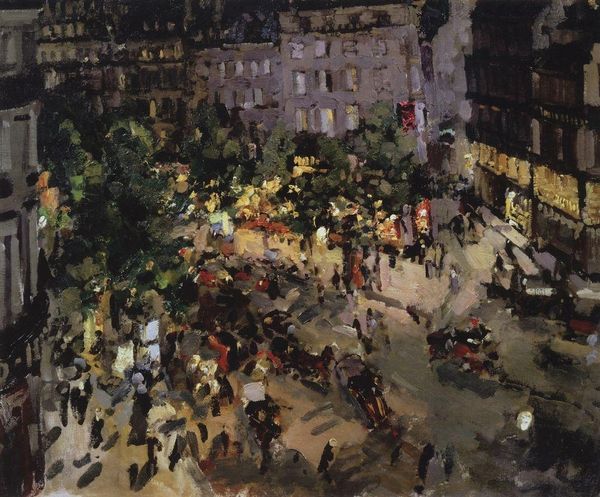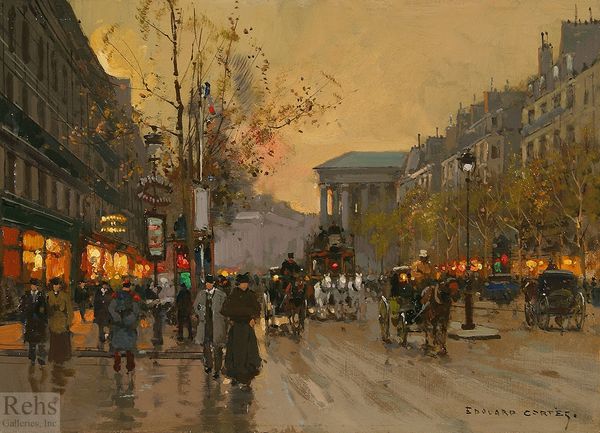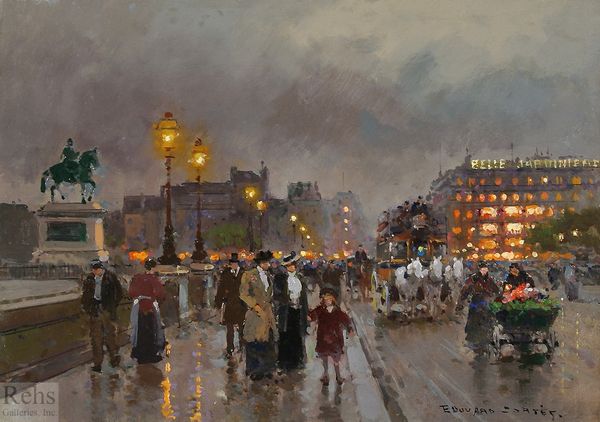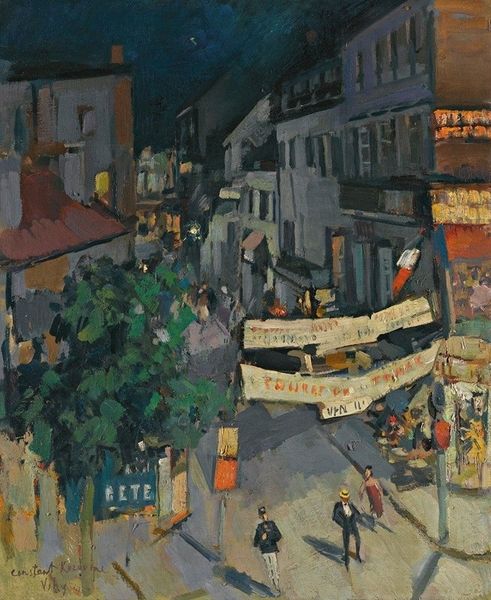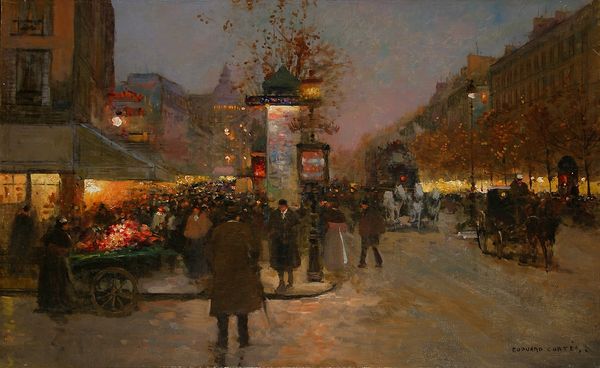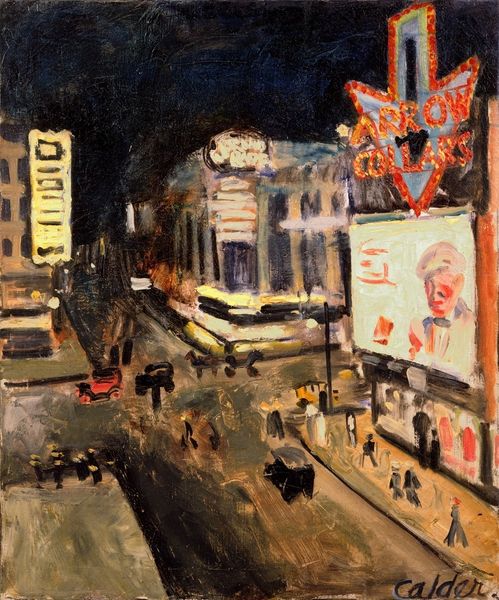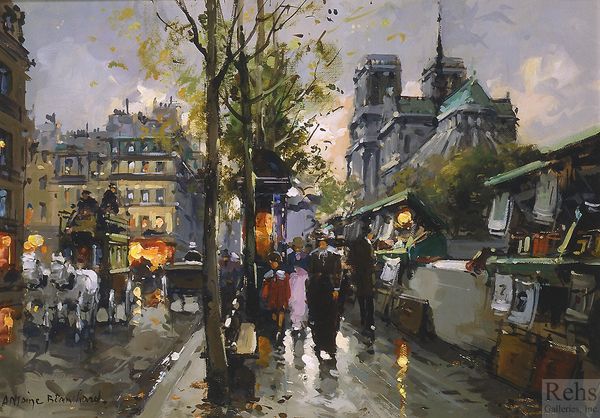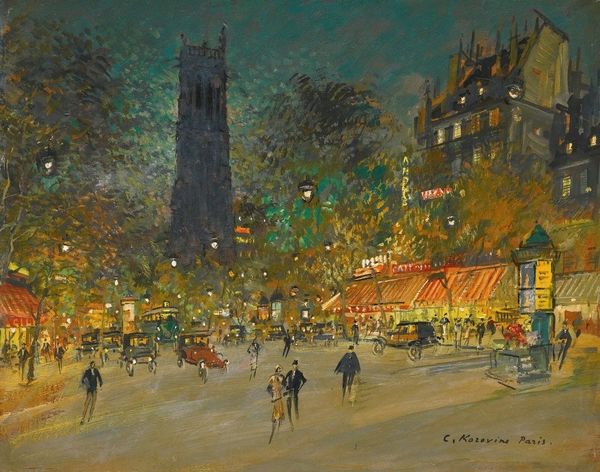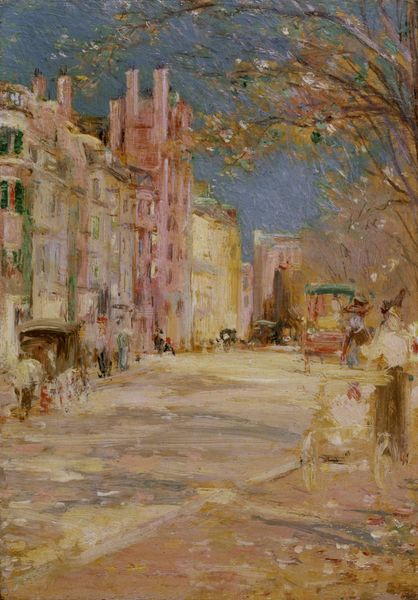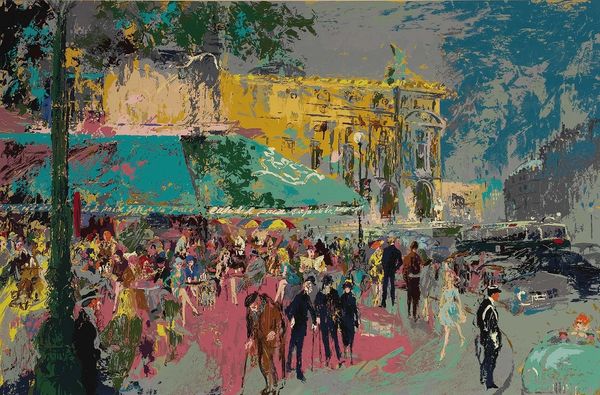
Dimensions: 48 x 59 cm
Copyright: Public domain
Editor: So this is Konstantin Korovin's "Vichy" painted in 1926 using oil paint, possibly en plein air. It’s really evocative – all these dabs of light making the whole scene shimmer. How do you read this cityscape in terms of its historical context? Curator: Well, consider that Korovin, though Russian, painted this in France after the Revolution. The vibrancy he captures… is it genuine celebration or perhaps a nostalgic yearning for a pre-revolutionary Russia seen through the lens of a European ideal? The city, bathed in light, becomes a stage, almost a distraction from the anxieties of exile. Does the superficiality of the light belie a deeper uncertainty, a questioning of belonging? Editor: That’s fascinating. It’s almost as if he’s painting a feeling more than a place. But the Impressionistic style seems to suggest spontaneity, an immediate capturing of a moment. Curator: Exactly! But who gets to capture and represent "the moment?" The gaze isn’t neutral. Korovin is positioning himself and his viewer within a very specific cultural milieu, one that’s inherently privileged, perhaps even deliberately escapist given the artist’s personal circumstances. Editor: So, by painting this bustling French street scene, he's perhaps constructing a new identity for himself? Curator: Or perhaps trying to hold onto an older one by refashioning it within this new setting. This is post-war Europe, after all, when traditional hierarchies were upended and artists sought to redefine their relationship to society. Is he celebrating a newfound freedom, or mourning a lost world? Editor: I hadn't considered how much the historical context shapes even an impressionistic, seemingly simple, cityscape. It adds so many layers to the painting. Curator: Precisely! It shows how artworks function as both mirrors and agents within specific cultural dialogues. They reflect a moment, but also shape its memory.
Comments
No comments
Be the first to comment and join the conversation on the ultimate creative platform.
